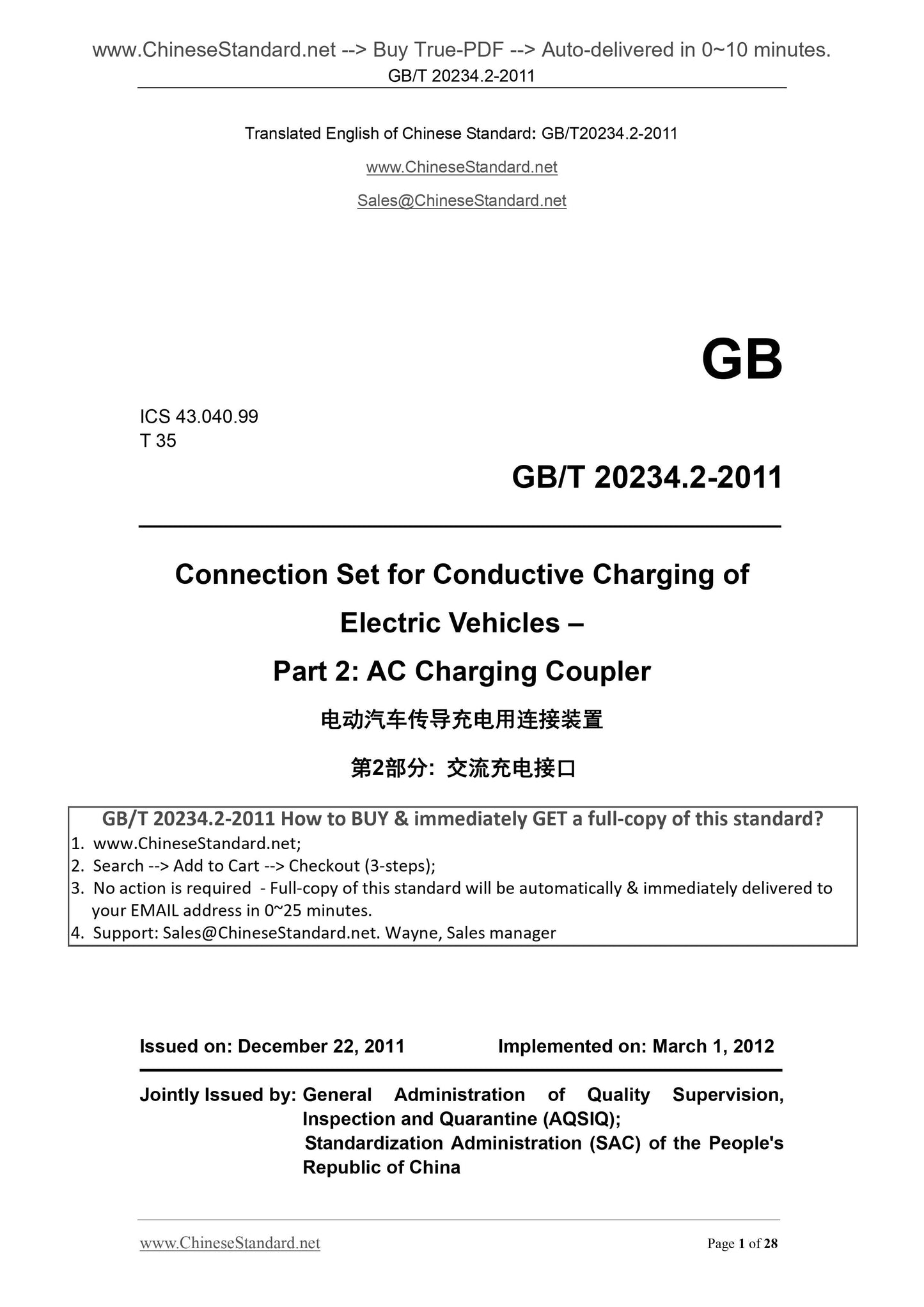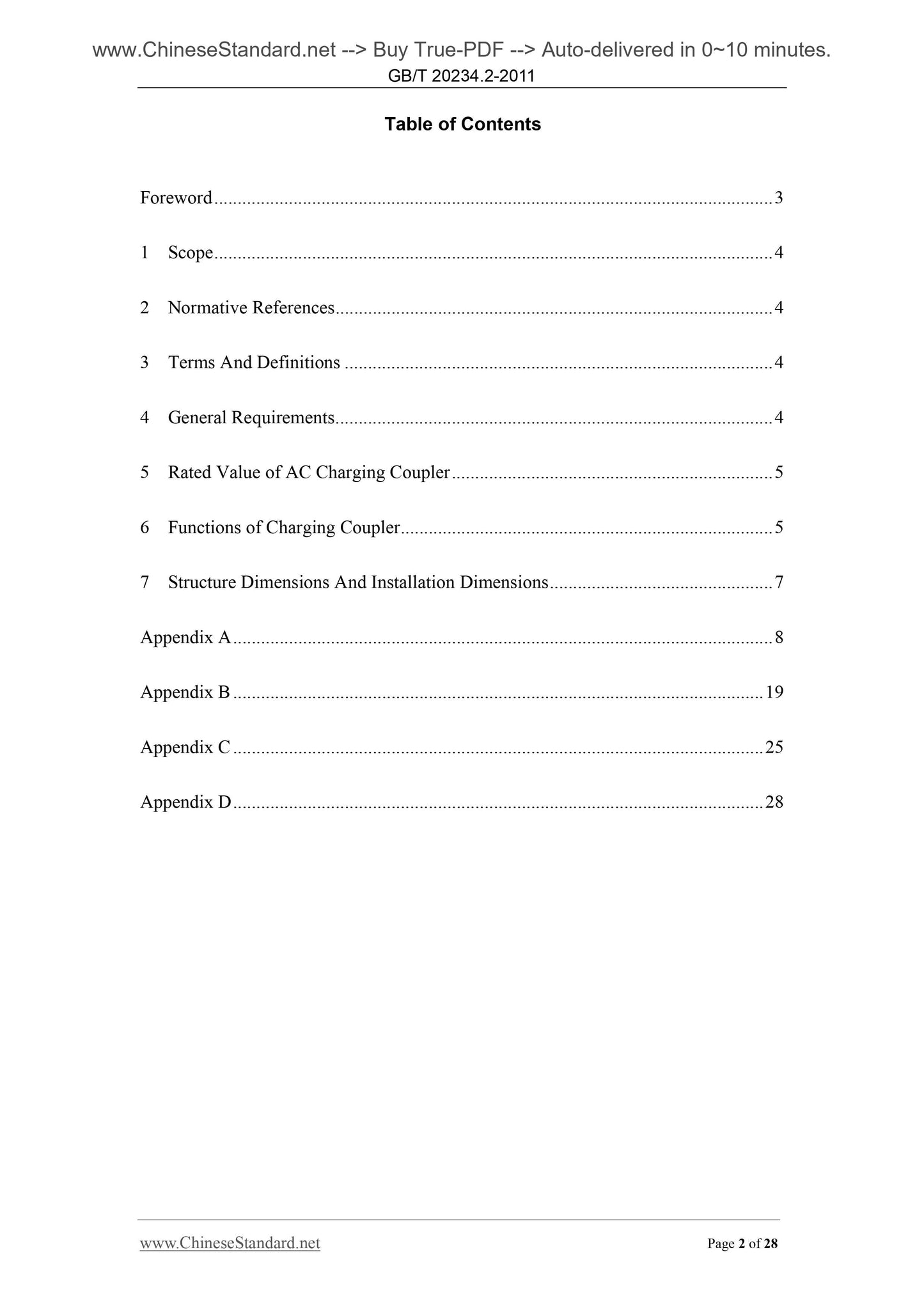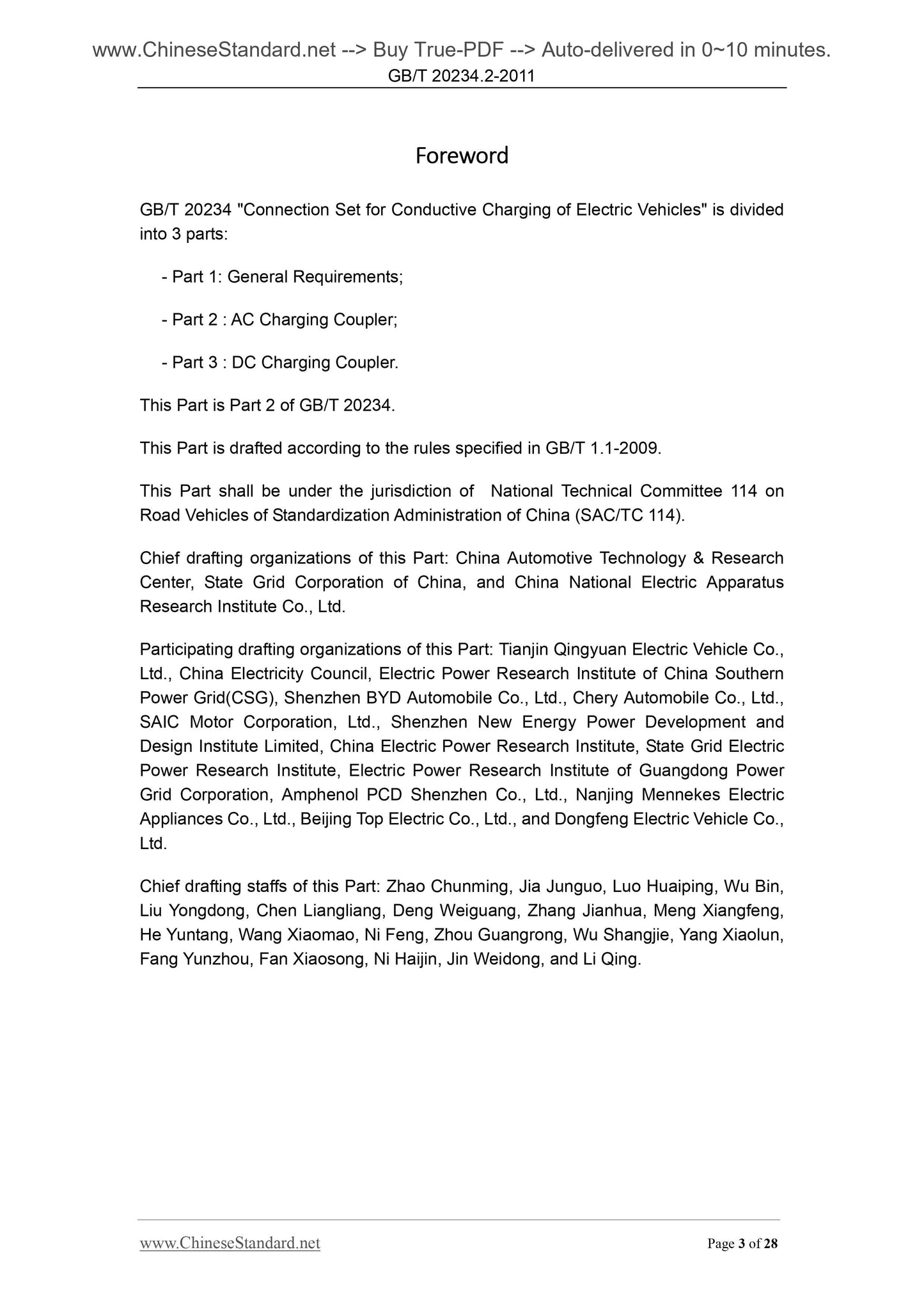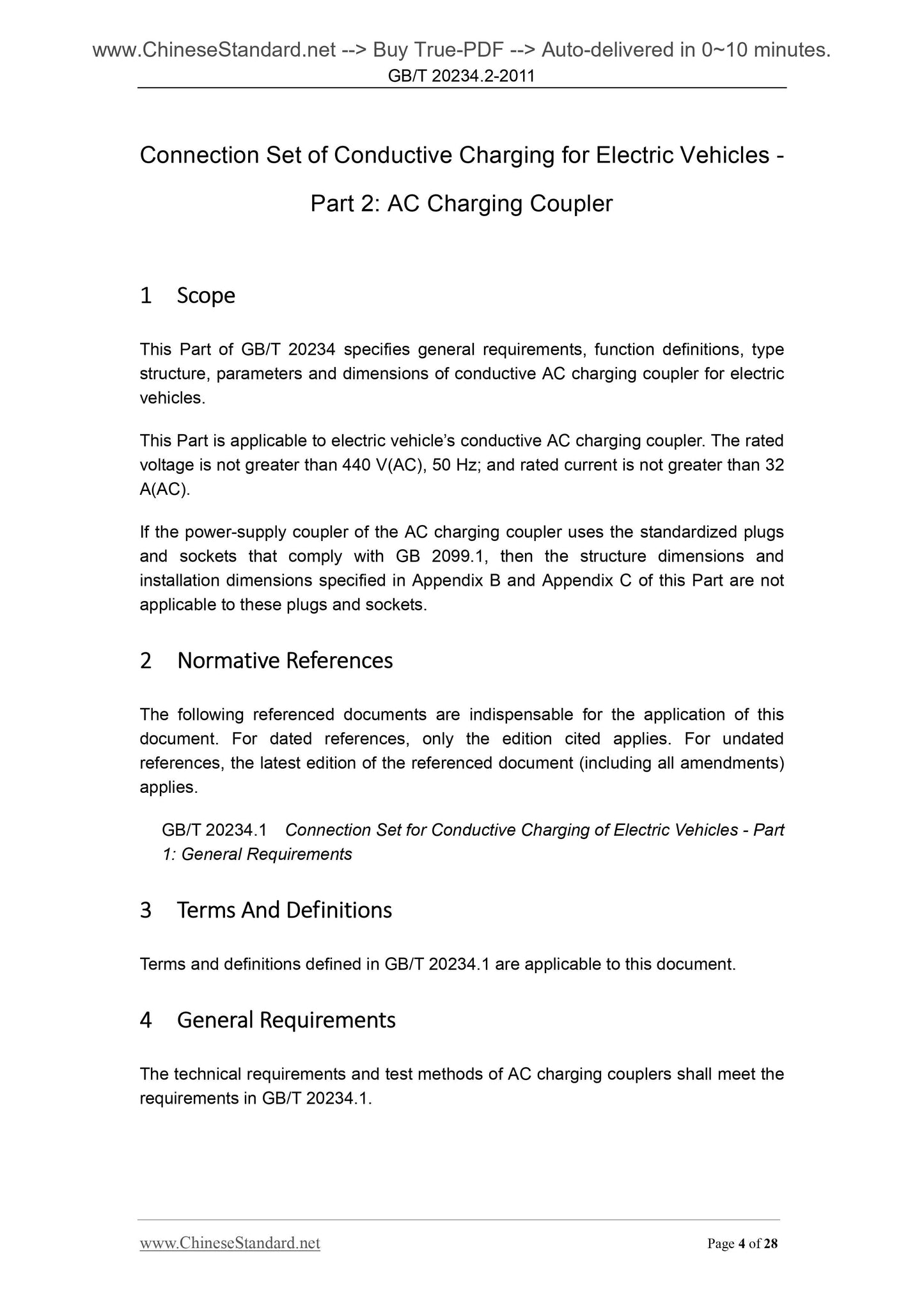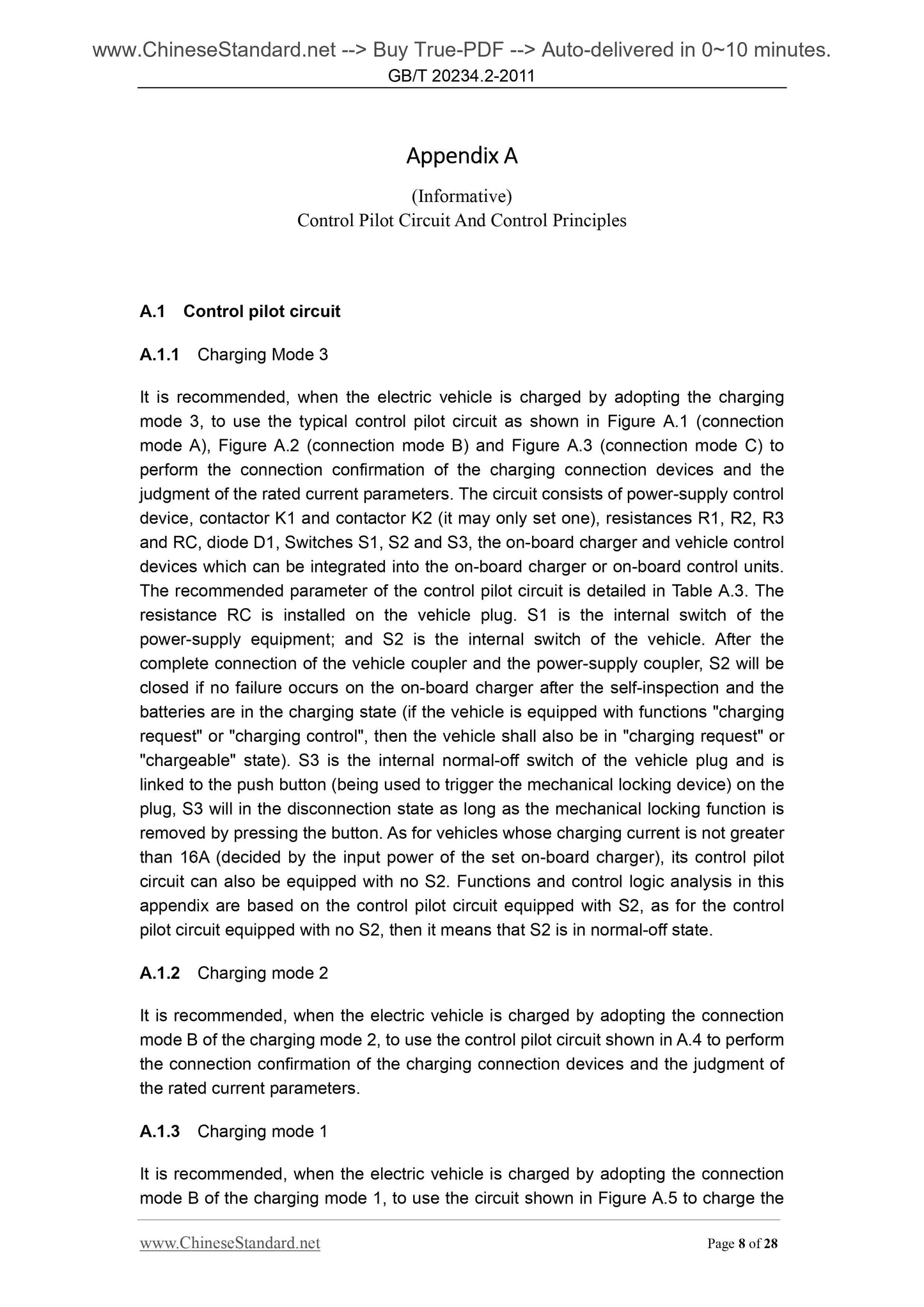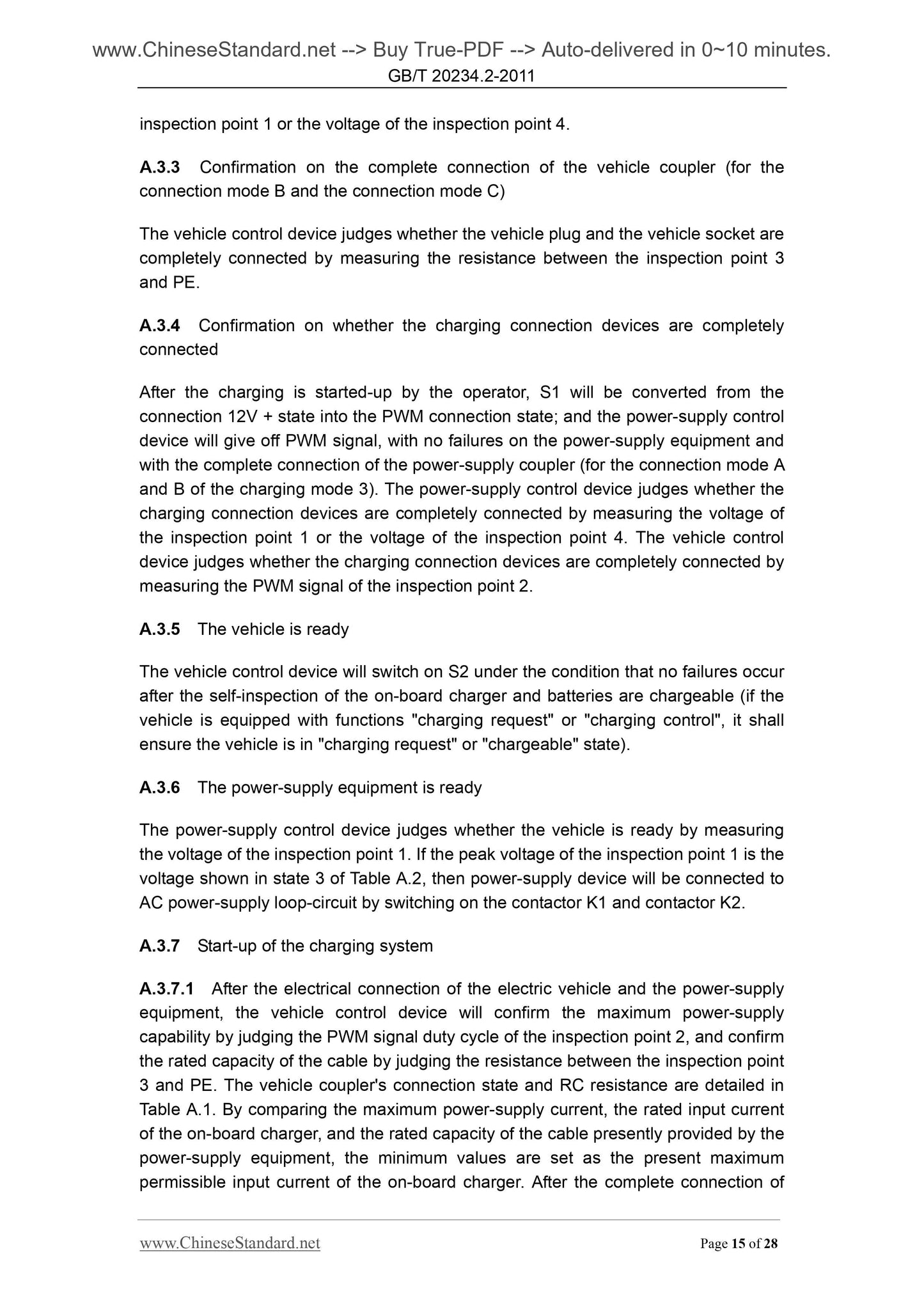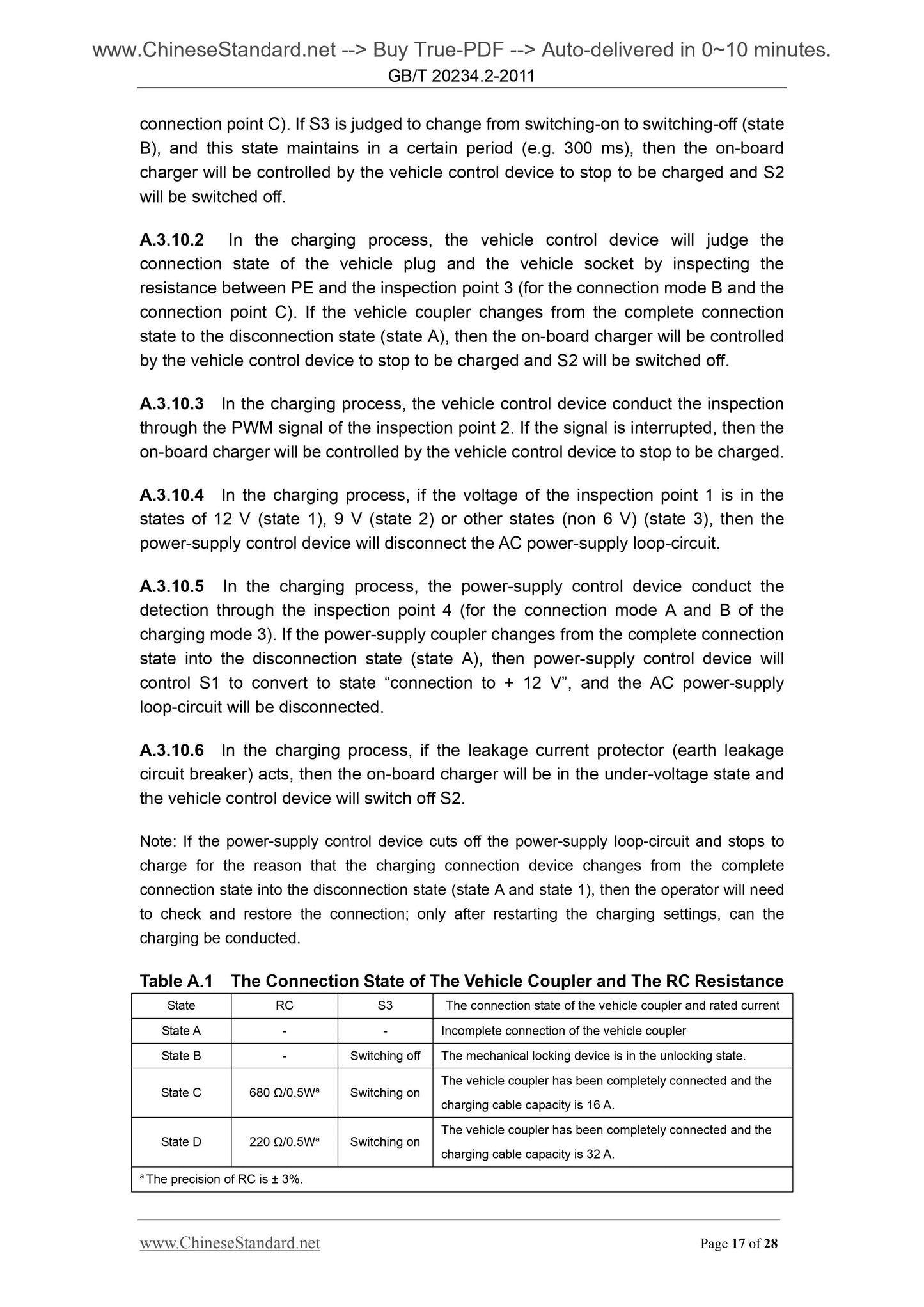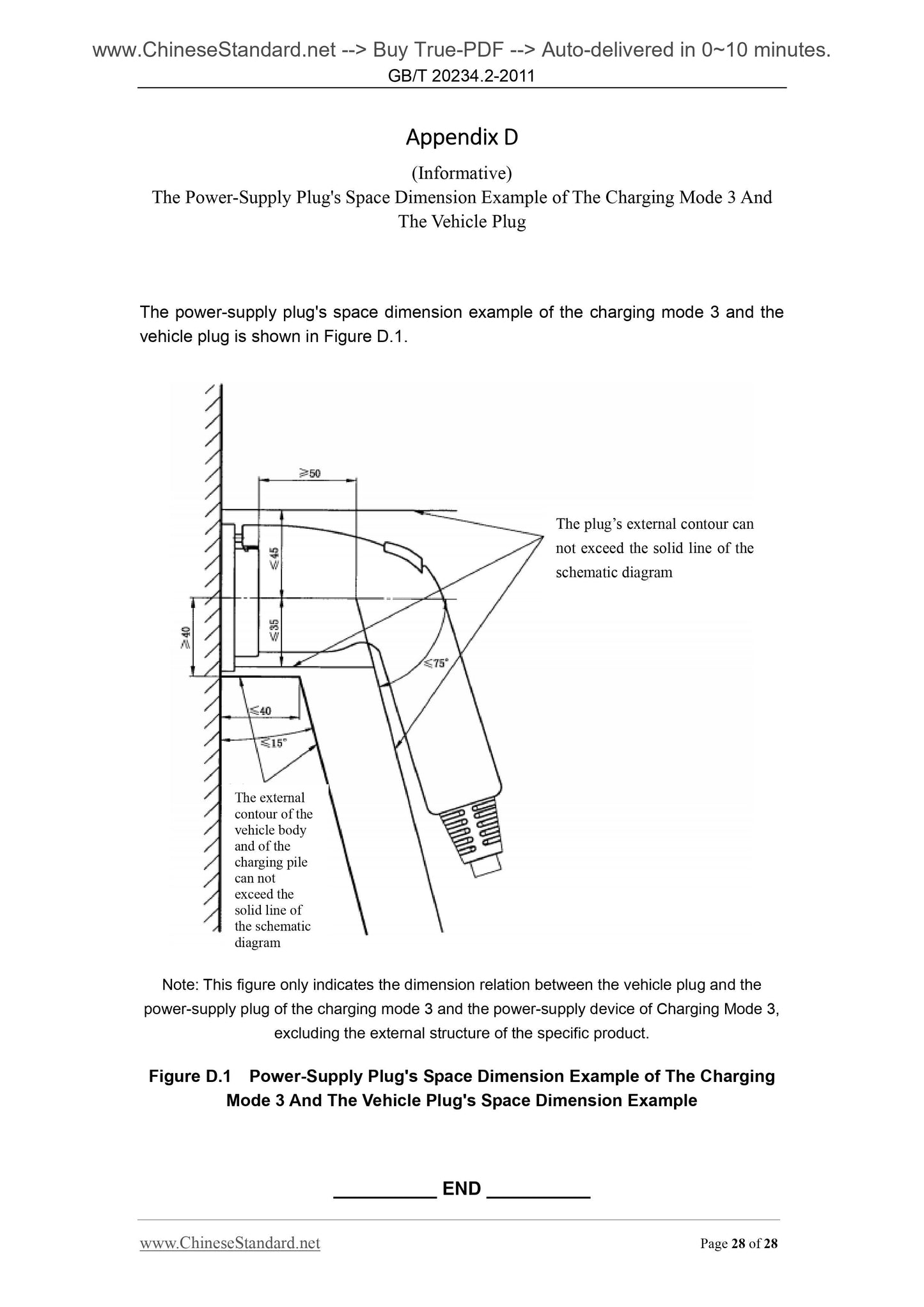1
/
of
8
PayPal, credit cards. Download editable-PDF and invoice in 1 second!
GB/T 20234.2-2011 English PDF (GB/T20234.2-2011)
GB/T 20234.2-2011 English PDF (GB/T20234.2-2011)
Regular price
$70.00
Regular price
Sale price
$70.00
Unit price
/
per
Shipping calculated at checkout.
Couldn't load pickup availability
GB/T 20234.2-2011: Connection set for conductive charging of electric vehicles -- Part 2: AC charging coupler
Delivery: 9 seconds. Download (and Email) true-PDF + Invoice.Get Quotation: Click GB/T 20234.2-2011 (Self-service in 1-minute)
Newer / historical versions: GB/T 20234.2-2011
Preview True-PDF
Scope
This Part of GB/T 20234 specifies general requirements, function definitions, typestructure, parameters and dimensions of conductive AC charging coupler for electric
vehicles.
This Part is applicable to electric vehicle’s conductive AC charging coupler. The rated
voltage is not greater than 440 V(AC), 50 Hz; and rated current is not greater than 32
A(AC).
If the power-supply coupler of the AC charging coupler uses the standardized plugs
and sockets that comply with GB 2099.1, then the structure dimensions and
installation dimensions specified in Appendix B and Appendix C of this Part are not
applicable to these plugs and sockets.
Basic Data
| Standard ID | GB/T 20234.2-2011 (GB/T20234.2-2011) |
| Description (Translated English) | Connection set for conductive charging of electric vehicles -- Part 2: AC charging coupler |
| Sector / Industry | National Standard (Recommended) |
| Classification of Chinese Standard | T35 |
| Classification of International Standard | 43.040.99 |
| Word Count Estimation | 19,113 |
| Date of Issue | 2011-12-22 |
| Date of Implementation | 2012-03-01 |
| Quoted Standard | GB/T 20234.1 |
| Regulation (derived from) | National Standards Bulletin 2011 No. 21 |
| Issuing agency(ies) | General Administration of Quality Supervision, Inspection and Quarantine of the People's Republic of China, Standardization Administration of the People's Republic of China |
| Summary | This standard specifies the electric vehicle conductive charging AC charging interface General requirements, functional definitions, types of structures, parameters and dimensions. This section applies to electric vehicle conductive charging AC charging port, its rated voltage not exceeding 440V (AC), frequency 50Hz, rated current not exceeding 32A (AC) power supply if the AC charging port interface uses a standardized plug meet GB 2099. 1 socket, this section and Appendix B Appendix C provides the structure and installation dimensions apply to these plugs and sockets. |
Share
